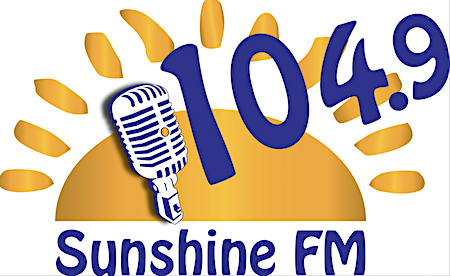One on one with Brian Newington
Today, Daryl Missen chats with legendary radio producer Brian Newington who has worked with many of the great talent at many of the great radio stations over his 50+ year career :-
Daryl: As a young audio guy, following in the footsteps of great radio producers like yourself, not only inspired me, but allowed me to copy sounds and techniques and try to work out how you got the great sounds, the EQ on voice, and the punch thru in your promos on air.
Tell us the Brian Newington story.
Brian: I grew up surrounded by valves, dials, loudspeakers, and radio cabinets. None of my family were in the communications industry at all, this is the junk I had collected by the time I was just eight. I was passionate about radio and sound.
By the time I had reached ten I could assemble two tape recorders together and edit my favourite songs recorded off the radio airwaves. Come 16 I had my first job at radio station 3AW. That was sweeping the cuttings off the editing room floor and learning the art of broadcasting along the way.
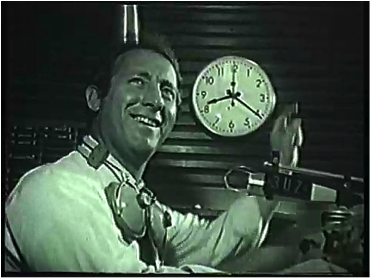 In 1962 I joined 3UZ, panelled the breakfast session with Don Lunn for many years. It was there I learnt about good radio sound, EQ, and Compression.
In 1962 I joined 3UZ, panelled the breakfast session with Don Lunn for many years. It was there I learnt about good radio sound, EQ, and Compression.
I remember Ken Sparkes smuggled into the country the first ever Optimod that really pumped up the station sound. It was such a pro station, even the chief engineer would put in the huge brand new transmitter valves during survey time, just so the AM signal would go that extra mile.
The 70s decade was a move to radio 3XY.
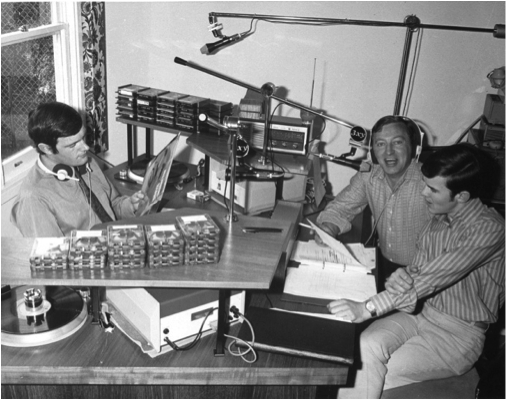 I was still honing my radio production skills and looking after Graham Kennedy during his afternoon show. This was the studio in the basement/laundry at his home in Frankston. Graham also knew every audio trick in the book.
I was still honing my radio production skills and looking after Graham Kennedy during his afternoon show. This was the studio in the basement/laundry at his home in Frankston. Graham also knew every audio trick in the book.
The late 70s saw Rod Muir and the 2SM team join forces to take 3XY to number one for many years. This is where the art of branding a radio station became essential.
I never bothered listening to other stations promos, there were enough great ideas and energy pouring out from the remarkable talent pool we had – Ron E Sparks, Mike Drayson, Greg Evans, Greg Smith, Lee Simon, Tim Webster, to name but a few of the best talent ever.
Daryl: What are some of the Brian Newington ‘tricks’ you can reveal to create strong sounding promo mixes?
Brian: In those days Multi-track Recording for radio stations was becoming affordable. That gave us the ability to be very creative. I remember asking audio guru Rodger Savage from Bill Armstrong’s studio, what would help with radio promos?
With Multitrack, he said; treat everything as separate audio layers. Don’t just apply the same processing to every track. Think about what you are trying to communicate. “Does it Enhance, or does it Detract”
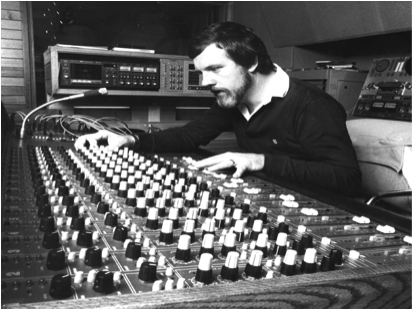 Those words I carried with me always, especially to the start-up of 2MMM FM era and then onto 2DAY FM. My method was to gently layer each voice, music or sfx with its own EQ and compression. This built up the overall sound without the horrible artefacts. This went against the tried and tested method of just pushing the whole analogue mix through the master processing once.
Those words I carried with me always, especially to the start-up of 2MMM FM era and then onto 2DAY FM. My method was to gently layer each voice, music or sfx with its own EQ and compression. This built up the overall sound without the horrible artefacts. This went against the tried and tested method of just pushing the whole analogue mix through the master processing once.
Having a good music library with plenty of sound effects was also a must, along with good voice talent. Also minimal use of echo and vocal effects as this detracted the overall presence.
It did not matter what mixing desk I used. I had my own Neve Compressor and EQ units, and Sennheiser mini shotgun mic’s and carried them with me wherever I was employed.
Daryl: You made the transition from radio to television post production, tell us how that happened …
Brian: The 90's I joined Channel Seven in Sydney, I was dumbfounded to learn there was a 6db reduction pad put across all commercials and promos. Viewers were always complaining about crook audio levels and the commercials were far too loud.
In reality the commercials were at the correct level, it’s just that the movies or other live shows where always broadcast at a lower level.
Often I would pass the main on air control room and look at the on air VU meters. They would show some movie dialogue flickering at – 30db all because some operator had taken his eye off the ball.
Another thing is they set their program level with line up tone, the loudest thing being an explosion at 0 db.
During the Tennis they would turn off any volume automation completely to avoid the sucking and pumping of a bad AGC system.
Eventually the sound problem was corrected with better processing and the technique of using radio sound production techniques for promos began.
This gave Channel Seven a very distinct promo sound.
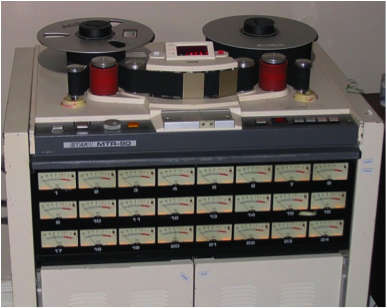 Each promo was recorded on an analogue 24 track Otari MTR90. Time code on the 24th track would lock to picture via QLock system.
Each promo was recorded on an analogue 24 track Otari MTR90. Time code on the 24th track would lock to picture via QLock system.
The bulk of the promo music and voice were placed on the first 8 tracks. The rest of the different tags and times for the network affiliates. Prime network was one example.
It was not uncommon to mix down over 700 promos each week. Phew.
Daryl: Who are your top 5 ‘all-time’ favourite promo voice over people?
Brian: Paul Rickets, Ken Sparks, Kevin Golsby, Keith Scott, Robyn Moore. Are these people not the best in the world?
Daryl: When Digital workstations started to emerge in production studios in the 90’s … how did you find the transition from analogue to digital?
Brian: In 1995 I did not know how to even turn on a computer.
By 1997 I was hooked, and by the time Windows XP hit the market I was happy with my self-taught progress. I used cool edit pro because it was one of the rare digital editors with a Multitrack. I loved the fact that you could finally see the wave form you were editing. All those years of manually laying up sounds, gone. Drag and drop was here to stay.
The same technique of using gentle layers of processing sound still applies today.
Daryl: Are you across the new ‘loudness’ protocol for TV – OP59? If so, could you share your thoughts and suggestions on how radio audio people working within TV networks (Prime/SCA etc) can adjust their mixes to accommodate these new parameters.
Brian: At 65 I am still producing a weekly syndicated radio show and the odd TV track.
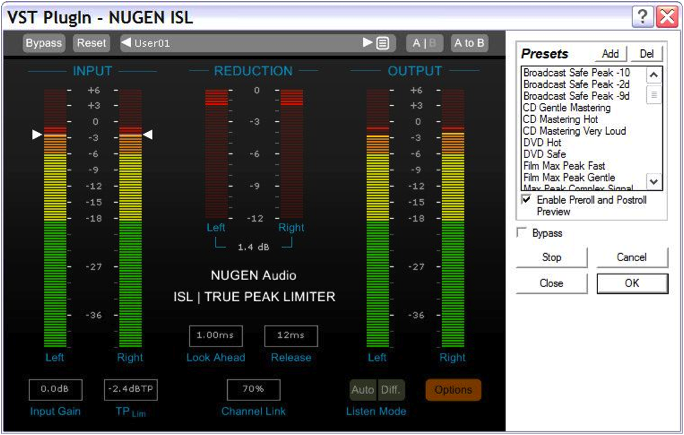 The best way I handle different levels and protocol, is to keep mixing and processing the way you would normally do. Then get yourself a vst copy of Nugen Audio ISL/ True Peak Limiter.
The best way I handle different levels and protocol, is to keep mixing and processing the way you would normally do. Then get yourself a vst copy of Nugen Audio ISL/ True Peak Limiter.
Dial up your parameter, TV, Film, Radio, CD, it’s all there. You can even put in your own pre-sets. And it is clean as a whistle. Then put your completed audio through the ISL to gently shave off any nasty peaks and give you the correct audio level.
That’s what I do. Simple.
Daryl: You have had such a distinguished audio career working with some of the best and most influential radio people in our industry, let’s talk audio awards …
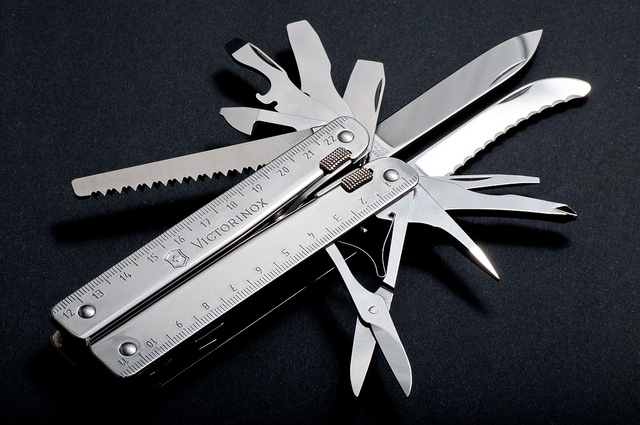 Brian: In 2001 and after many years of not getting anywhere with the Australian Golden Stylus awards, I entered a track into the Hollywood Radio Awards that I had written and produced for Victoria Knox, the Swiss army knife people.
Brian: In 2001 and after many years of not getting anywhere with the Australian Golden Stylus awards, I entered a track into the Hollywood Radio Awards that I had written and produced for Victoria Knox, the Swiss army knife people.
It was a 60s & 30s wide screen radio commercial. Big music. Big voice. Big effects.
It won best sound production in both sections, and best script writing in both sections as well.
Isn’t it funny how you have to go overseas to get recognised?
Listen to the ad below, with added endorsement from John Laws….
https://radiotoday.com.au/music/Brianad.mp3
or hear it here
Daryl: You now teach audio and radio production at Petersham TAFE. What topics of radio production do you feel most audio students struggle with?
Brian: Students I teach can record and edit interviews using Adobe Audition, but when it comes to mastering they always forget to normalise and also apply some limiting to get a good audio level. In these days of radio automation there is no person to boost your crook audio levels.
Interesting enough is the fact girls are much better audio producers than guys. Having taught many classes for 12 years the girls stand out. They have more attention to detail I suspect.
Last semester, one student gave me an audio interview and edit project to mark. It was terrible, all the Ts an Ss were missing and all the normal pauses were missing. You see he had edited the waveform without even putting the headphones on to check the audio. He had edited only the visual wave form gaps. Talk about lazy.
But out of a class of 18 only 5 will be outstanding and instantly get jobs in audio production in the radio industry.
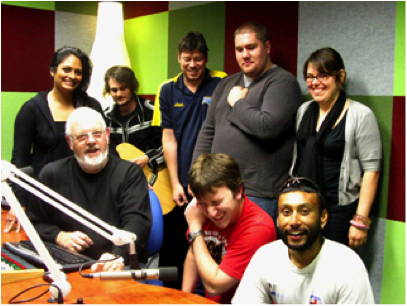 |
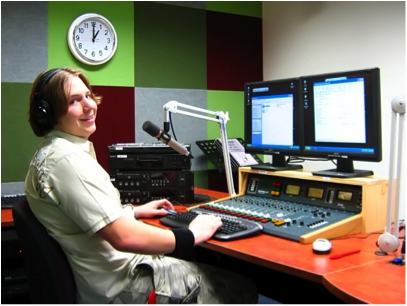 |
My philosophy is that it’s no use going to the grave without passing on the info and techniques we learn along the way, to the new kids on the block.
After all that’s why we are here.
